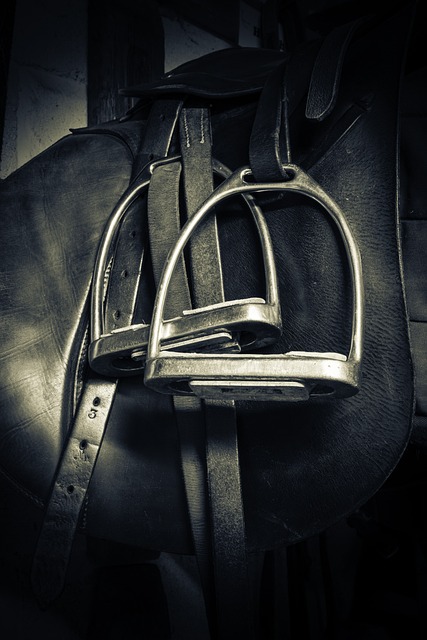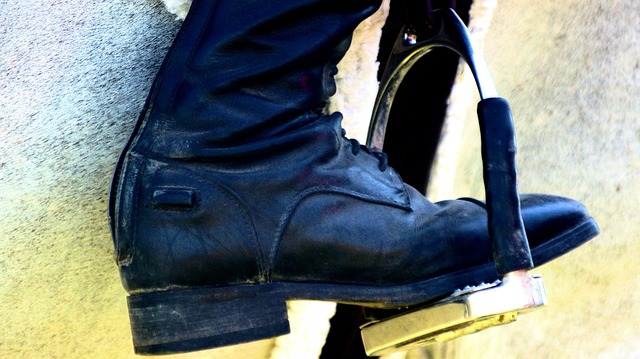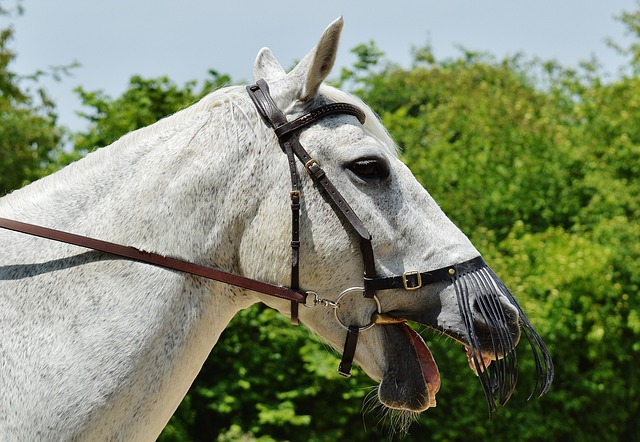
What do Martingales do for Horses?
April 16, 2023
Stirrup Leathers
April 16, 2023There are several types of stirrup irons used in horse riding, each with a specific purpose. Here are the most common types of stirrup irons and their uses:
- Fillis stirrup irons: These are the most common type of stirrup irons used in English riding. They have a simple design with a flat base and a curved sides. The stirrup leathers pass through a slot on the top of the stirrup and are secured with a metal keeper. Fillis stirrup irons are used for all types of English riding disciplines.
- Jointed stirrup irons: These stirrup irons have a hinge or pivot point in the middle of the footplate, allowing the stirrup to move with the rider’s foot. This can help to reduce pressure on the rider’s joints and improve flexibility in the ankle. Jointed stirrup irons are used for riders who suffer from joint pain or stiffness.
- Safety stirrup irons: These stirrup irons have a mechanism that allows the stirrup to release from the saddle in the event of a fall. This can prevent the rider from being dragged by the horse if their foot becomes caught in the stirrup. Safety stirrup irons are commonly used in jumping and eventing.
- Peacock stirrup irons: These stirrup irons have a rubber band on the side of the footplate that can be released in the event of a fall. The rubber band allows the rider’s foot to be released from the stirrup, reducing the risk of being dragged by the horse. Peacock stirrup irons are commonly used in pony club and beginner riding programs.
- Bent-leg stirrup irons: These stirrup irons have a bend or angle in the footplate, which helps to reduce strain on the rider’s knees and ankles. Bent-leg stirrup irons are commonly used for riders who suffer from knee or ankle pain.
- Offset stirrup irons: These stirrup irons have a slightly offset design, which allows the rider’s foot to sit in a more natural position. This can help to reduce strain on the rider’s joints and improve balance in the saddle. Offset stirrup irons are commonly used in dressage and eventing.
- Western stirrup irons: These stirrup irons have a larger footplate than English stirrup irons and are designed to be used with western-style riding boots. Western stirrup irons may have a more decorative design, but they are generally used for the same purpose as English stirrup irons. In addition to the traditional metal stirrups, other materials can also be used to make stirrups. Here are some of the most common materials used for stirrups:
In addition to the traditional metal stirrups, other materials can also be used to make stirrups. Here are some of the most common materials used for stirrups:
- Plastic stirrups: These stirrups are lightweight and durable, making them a popular choice for trail riding and endurance riding. Plastic stirrups may also have a wider footplate than metal stirrups, providing more stability for the rider.
- Wood stirrups: Wooden stirrups can be made from a variety of woods, including oak, maple, and walnut. They can be finished with a variety of stains and varnishes for a custom look. Wooden stirrups are often used in western riding disciplines.
- Leather-covered stirrups: These stirrups have a metal base that is covered with leather. The leather can be embossed or tooled for a decorative look. Leather-covered stirrups are often used in dressage and other English riding disciplines.
- Aluminum stirrups: These stirrups are lightweight and durable, making them a popular choice for racing and jumping. Aluminum stirrups may also have a more modern look than traditional metal stirrups.
- Titanium stirrups: These stirrups are even lighter than aluminum stirrups and are often used by professional riders. Titanium stirrups can be expensive, but they provide excellent strength and durability.
When choosing stirrups, it’s important to consider factors such as your riding discipline, your skill level, and your personal preferences. A knowledgeable instructor or trainer can help you select the best stirrups for your needs.
Did you know Stirrups have been used in horse riding for over 2,000 years. Stirrups were first used by the nomadic tribes of Central Asia, who used them to improve their horsemanship and their effectiveness as warriors. The earliest stirrups were made of wood or bone, and they consisted of a simple loop that the rider could place their foot in.
Over time, stirrups evolved to include a more complex design with a base and a footplate. The first metal stirrups were developed in China during the Han dynasty (206 BC-220 AD), and they quickly spread to other parts of the world. By the Middle Ages, stirrups had become an essential part of European horsemanship, and they were used by knights and soldiers for both combat and sport.
The design of stirrup irons continued to evolve over the centuries, with new materials and technologies being introduced. Today, there are many different types of stirrup irons available, each designed to meet the specific needs of different riding disciplines and individual riders.




